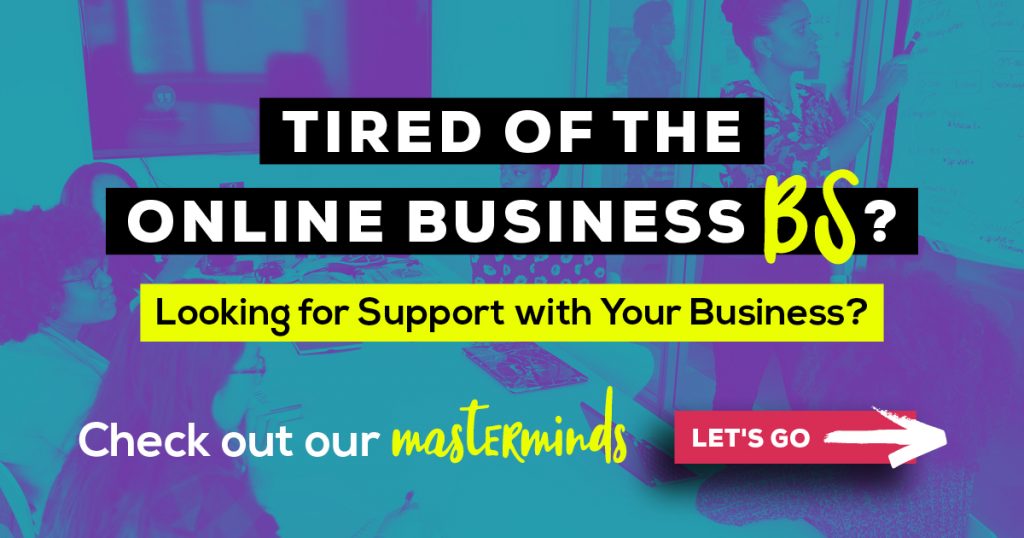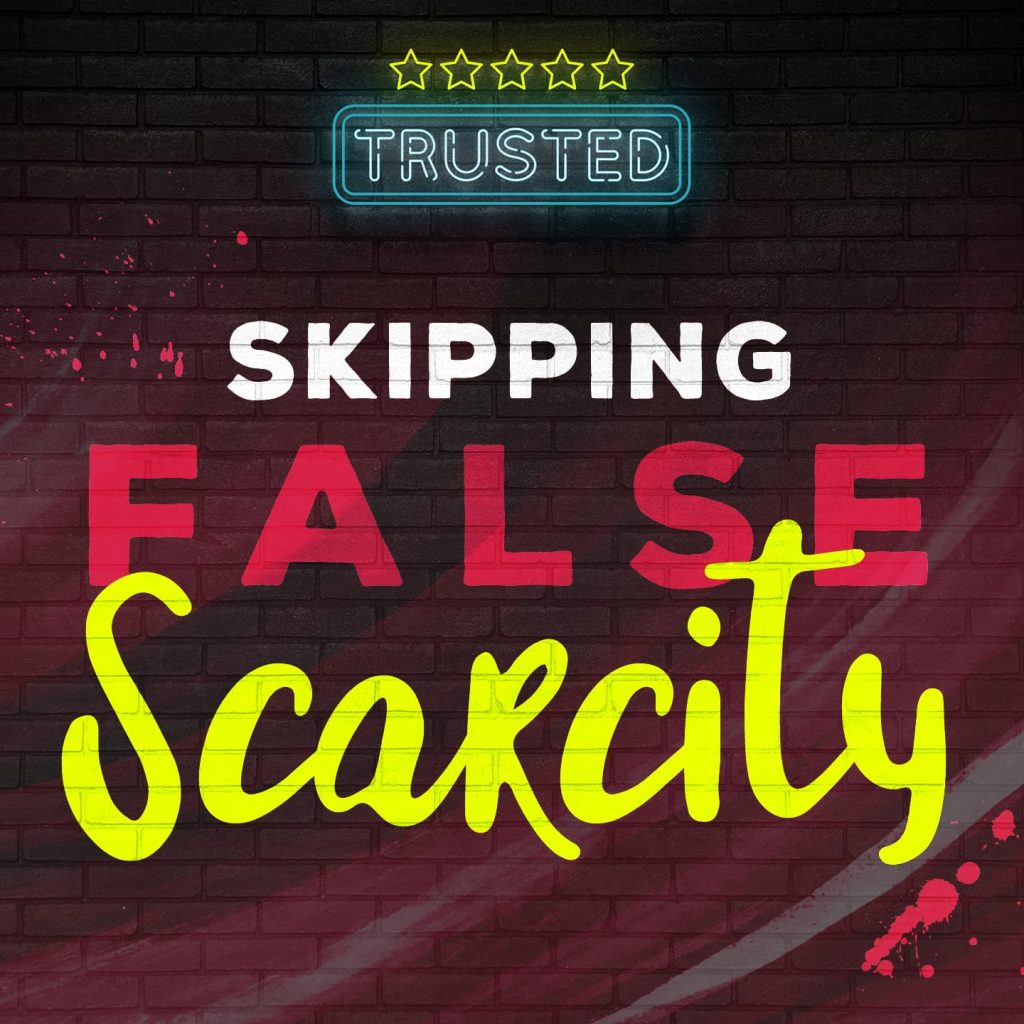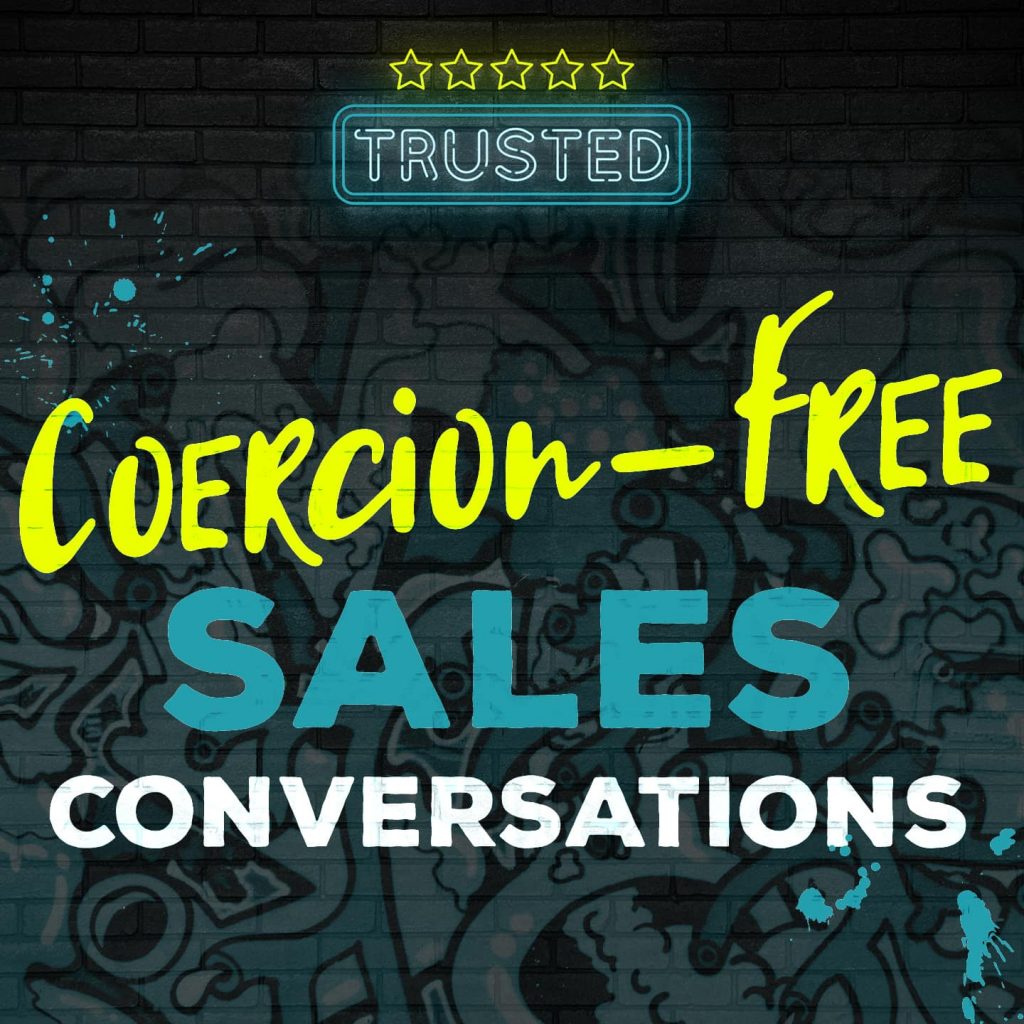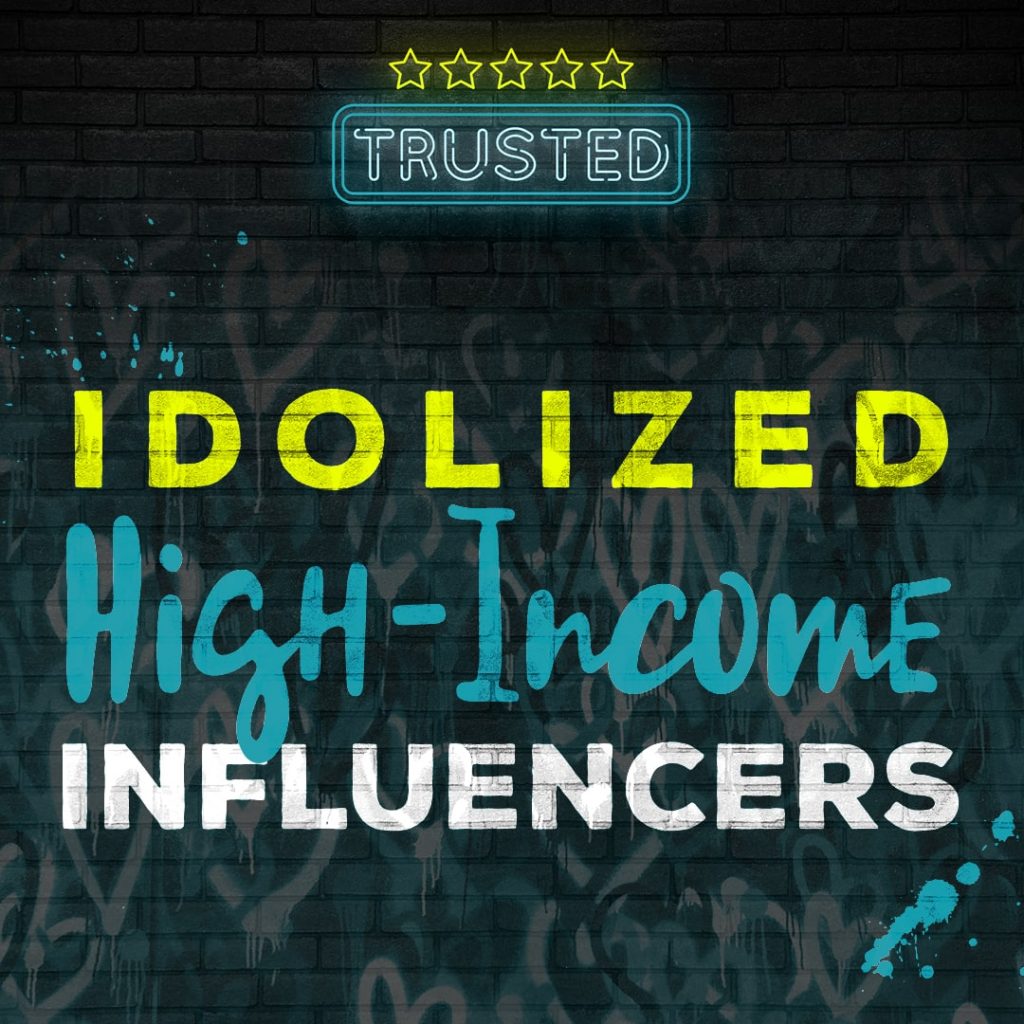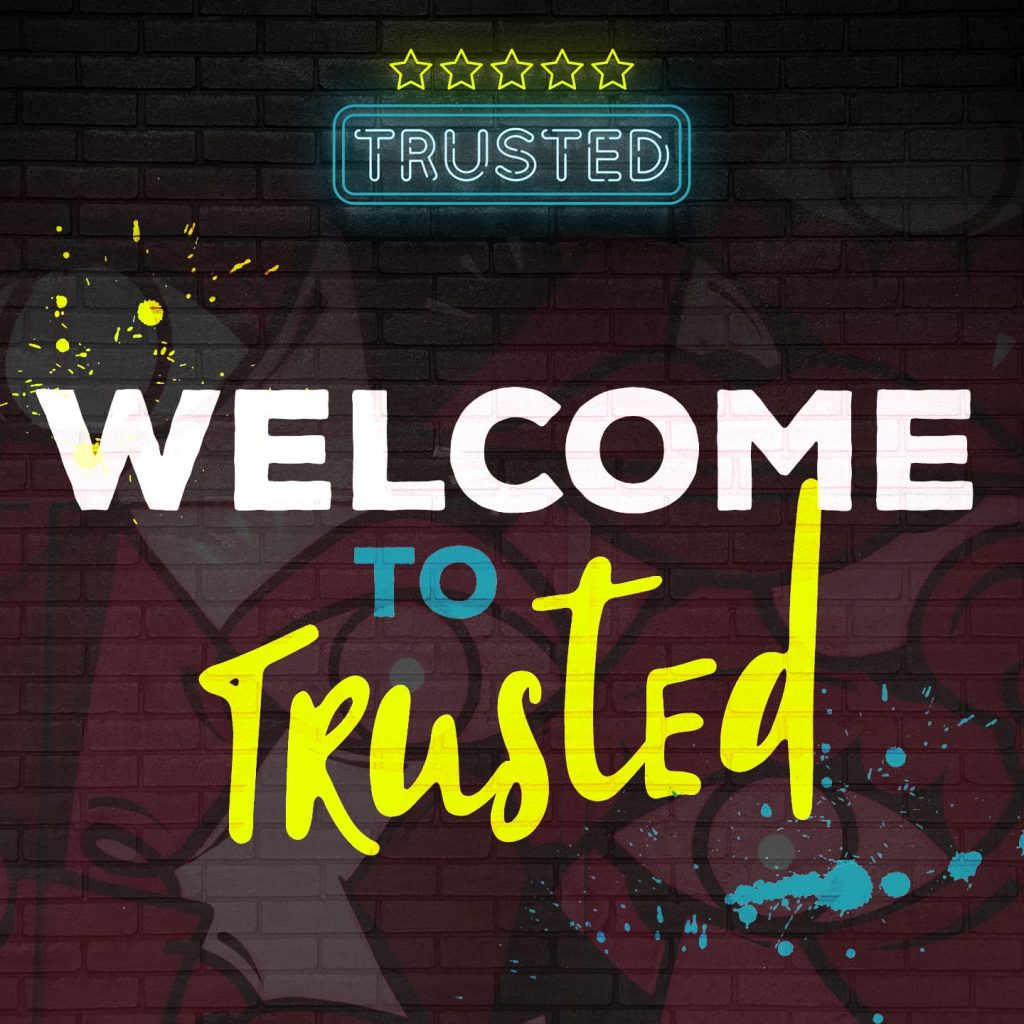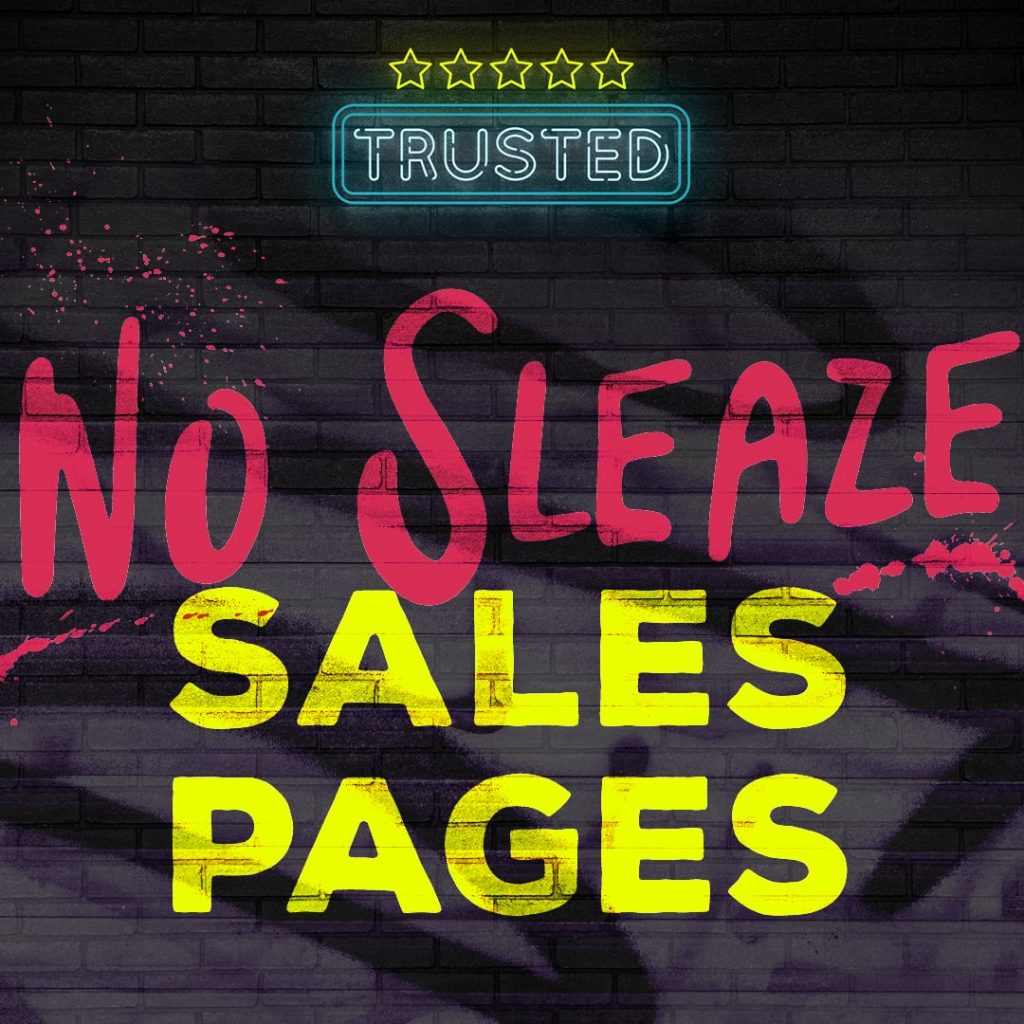
No Sleaze Sales Pages
We’ve all been there. We decide to check out an offer that seems interesting and we’re confronted with a toxic trainwreck full of fear, manipulation, and coercion. Yes, I’m talking about sleazy sales pages!
In this episode of Trusted, we’re diving into the many problems with the status quo of sales pages, and talking about the trusted alternatives for your sales pages.
Sales pages. Love them or hate them, if you run a business, you need some type of sales page to communicate the details of your offer.
Today, I’m putting on my copywriter hat and we’re going to talk about the status quo of sales pages in the online business world.
Because those sales pages? They’re written and designed to get us to the next step whether that be buying or booking a call. It’s the difference between us saying yes or running the other way.
The Real Problem with Sleazy Sales Pages
When you’re thinking about sleazy sales pages, you’re probably thinking of the ones with an endless scroll and some tacky-looking red buy now buttons. Those ones are easy to filter out as it’s clear you’re dealing with some bro marketing bullshit.
But not all sales pages that are engaged in questionable practices look that way. In fact, many of these celebrity entrepreneurs are using beautifully designed sales pages and incredibly subtle, but still downright despicable copy to lure us in.
Before we talk about what exactly that looks like and what to watch for, I want to acknowledge that at the root of many of these problems is a patriarchal communication style (thanks to Darla Antoine for that reminder) along with a white supremacist, capitalist, colonialist mindset.
That may seem like a leap for some of you, but it’s not.
When you consider each of these tactics, you can see how power dynamics, entitlement, and greed come into play. People are selling this way because they want to make money, and they think it’s totally okay to screw you over emotionally and/or financially to get there.
Part of the nuance of this conversation is that while these practices do harm, they do harm disproportionately to groups or individuals who’ve historically been excluded and/or discriminated against. They reinforce the systems of oppression that many so-called ethical business owners who are speaking out about inclusion and social justice issues claim to care about.
Common Problems with Sales Pages
Now, let’s dive into the common problems with sales pages by starting with a caveat. This is by no means an exhaustive list, but these are the most common and concerning to me at the moment.
The problems with sales pages can be broken into overall macro-level ones with how they’re approached, and then specific tactics that are used.
At the highest level, one of the most pervasive problems with sales pages in the online business world is a complete lack of respect for the buyer. The entire sales page from top to bottom is created in a way that actively does harm to the potential buyer by using fear and manipulation.
Another tactic is how sales pages are structured in a way to be deliberately complex and confusing. From dark patterns to repetitive, hypnotic copy, countless tricks are used in the page structure and content to get you to buy.
Now, let’s talk about some specific tactics that are used on sales pages which I consider to be problematic. Again, this is not at all a complete list, but some of the ones that are most pervasive.
Picking at Pain Points
When you’re taught to write sales copy, one of the main tenets is to know your potential buyer’s pain points. While this is critical information, it doesn’t mean we need to pick at people’s pain points in order to make the sale.
Yet, that’s how the majority of sales pages are written. They’re crafted in a way to go far beyond acknowledging pain points towards full-on exploiting them.
Endless Exaggeration and Hyperbole
The status quo of sales pages in online business is rooted in exaggeration and hyperbole. I’m talking bullshit income claims, overstating what an offer will do for your business, to the selling of “secrets”.
And many times these things are done in a way that’s incredibly subtle, but when you look carefully you’ll see they’re there. Many times these tactics are designed to build trust with us in a way that’s incredibly inauthentic. So while they may work, that trust, it’s built in a way that’s not sustainable.
Dramatic and Traumatic Stories
One final problem that I want to cover before we talk about alternatives for your sales pages, and how to spot the difference when you’re considering buying
An effective sales page needs to make an emotional connection with the buyer, so stories are used to help bring things to life. While I love stories, I have zero patience for the way stories are often used on sales pages.
Stories are often high on drama or sharing trauma as a way to make a connection. While this gets the buyer’s attention, it’s doing it in a way that’s manipulative and unhealthy.
I could have an entire podcast called Maggie’s problems with sales pages, so let’s talk alternatives
The Alternatives: Principles fo No Sleaze Sales Pages
As I get into the ins and outs of creating a no sleaze sales page, I want to note that I’m not going to get into the specifics of structuring, writing, or designing your sales page.
Instead, I want to focus on commitments or practices you can make to help create a sales page that’s rooted in building trust with potential buyers without shady tactics or trickery.
Empathy Over Exploitation
There’s been a lot of conversation in online circles about if we should be focusing on pain points, and personally, I believe that’s the wrong conversation as pain points exist.
They’re real, and pretending they don’t exist doesn’t necessarily serve our buyers.
Pain points are real and valid, and they’re what motivate people to buy. But that doesn’t mean we should exploit them using fear, pain, or manipulation.
We can acknowledge those pain points without exploiting them.
To do that we need to take the time to better understand our potential customers and empathize with their pain points. By getting closer to our customers, we’re able to put empathy over exploitation and move away from tactics that are rooted in making the sale in harmful ways.
The Buyer Knows Best
Within TrustDNA, there are five trust cores which are the building blocks of trust. One of these is respect, and I define that as treating everyone with fairness and dignity.
Yes, I believe this should be clearly understood and not something we should have to specifically call out, but here we are. The online business world is so focused on the needs of the seller and making bank that the buyers are the casualties.
This is why to put the buyer at the center of our sales page, we need to respect them. We need to remember that the buyer knows what’s best for them and not try to short circuit them into trusting us or buying us.
At a minimum, this means respecting their timelines and budget. For their timelines, it means not using bullshit scarcity tactics to force them into action (more on that coming up in ep5 of Trusted). Give them the space to decide, instead of amping up the pressure with expiring bonuses or telling them the offer will be gone forever.
On the budget side of things, we need to stop using messaging and stories that are designed to get people to invest no matter what. (And maybe slow the hell down and create things that people will want to buy vs. crappy offers that require us to play all kinds of games to make a sale.)
The alternative? Trust your people to decide.
I know if you’ve been using these tactics, you’re likely looking for a 1:1 substitute to ensure your sales aren’t impacted.
Sorry, it’s not that simple as we’d be replacing one BS tactic for another one. But I will say this when you’re not pulling this shit on people, you’ll have clients and customers who are all in. (Not ones that are starting off with regret and buyer’s remorse.)
Plus, respecting your customers? That’s the right thing to do and it’s priceless.
Truth, Transparency & Zero Trauma
As I shared in the last episode, Truth and Transparency are two of the building blocks of trust, and for your sales pages, they’re essential.
With your sales page, it needs to be truthful and transparent about the offer and what’s included should be front and center so there aren’t any surprises.
Do you know what fills people with regret and leads to refunds? Unclear offers which confuse buyers into a purchase.
It goes without saying that you should be clear about your expertise, without exaggeration or embellishment. The alternative to the bullshit we see out there is really just telling the damn truth. (I know, it seems simple, but apparently, that’s super hard for a lot of people thanks to the fuckery of this industry.)
As I touched on a few minutes ago, much of the online business world was built on dramatic and traumatic storytelling, and these types of stories are often used on sales pages.
Truth is, these stories are often more fiction than fact, as they’re designed to make people more interesting than they actually are in a bid to make an emotional connection. And if they are true, they’re often done in a way that’s triggering or toxic for the potential buyer.
If you want to use stories on your sales page, great. But adopt a zero drama or trauma policy whereby you tell stories in a responsible and respectful way. Where you think carefully about how and what you’re sharing may land for your audience or what the emotional impact may be.
A connection rooted in a negative emotion with your would-be customer isn’t how you should want to make the sale.
It’s definitely no way to start a business relationship, as the power dynamics are messed up from the start, and if someone is buying in this state, I question how you can ever build a trusted relationship. (Not to mention, the potential for coach abuse, co-dependence, or even a business-version of trauma bonding is all too real.)
Build Lasting Relationships by Putting Trust First on Your Sales Pages
As we wrap up, I want you to know that you can create a no sleaze sales page and still sell your offers. By putting trust first, and prioritizing truth, transparency, and respect, you’re creating a relationship with your clients that lasts. The kind that turns people into loyal customers and friends for years to come.
When you consider how you want to sell in your business I challenge you to think about how you can live your values and be in true integrity with your sales pages. You can do that by using no sleaze sales pages.
Your sales page is often one of the first real touchpoints for your would-be customer or client, and it’s a place you can build an incredible amount of trust….or you can quickly break it.
In the next episode of Trusted, we’re talking about the messed up and manipulative world of sales calls.
To learn more about building a trust-first business and TrustDNA, check this out.
